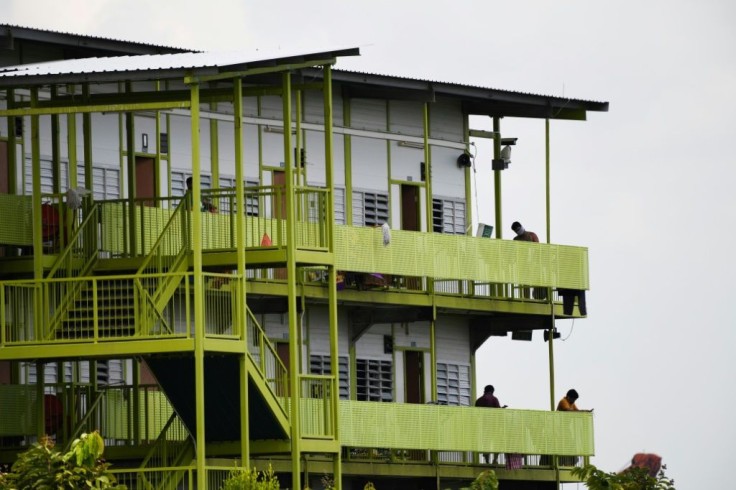Coronavirus News: Singapore Was Proud Of Its Success, Then A Second Wave Swept In
Singapore is known for a strict policy against gum chewing and littering where severe punishments are the consequence of those minor infractions. It has a world-class health system and only one land border, meaning that it is much easier to account for people entering the country.
The well-policed city-state may have failed to follow the idiom “leave no stone unturned” and that may be responsible for a second wave of the global pandemic called COVID-19. The unturned stone appears to be with overlooked migrant workers living in cramped dormitories and a lack of respect as to how fast the coronavirus can spread through an urban area with no lockdown measures in place.
The statistics from Worldometer, a statistical reference website, tells the tale. From March 6 through March 16 the daily new case count was below 20. From March 17 to April 4, while Italy, Spain, other European countries, and the U.S. were being ravaged by the disease, Singapore’s daily count of new cases remained below 100. The April 5 count was 120 and on April 18, 942 new cases were reported for a single day. Fortunately, the death count remains low at 11.
Early on, when it became apparent that the coronavirus had moved beyond China, Singapore instituted quarantines, it engaged in enhanced public awareness campaigns and set up isolation wards in hospitals in anticipation of a wave of infections.
Dale Fisher, the chair of infection control at the National University of Singapore's hospital, wrote in an opinion piece: "Singapore didn't let positive patients back into the community." People who did not show symptoms but tested positive were isolated in hospitals until they tested negative.
Still fresh in the memory of health care officials was the 2003 SARS epidemic. Experience from that prevented medical staff from infection.

It all seemed to work, causing Fisher to proudly write before the current spike, "In Singapore, we want life to go on as normal. We want businesses, churches, restaurants and schools to stay open. This is what success looks like. Everything goes forward with modifications as needed, and you keep doing this until there's a vaccine or a treatment."
For a while, it was business as usual in Singapore as it remained relatively open. And other countries noticed.
Hong Kong, bordering China, took a different approach by closing public schools in February very early on, encouraging people who could work from home to do so. The former British colony had an initial wave that lasted for about a month between March 14 and April 11.
The daily count peaked on March 29 with 82 new cases, but the overall trajectory of the daily case count resembles more of a bell-shaped curve dropping rapidly compared to a plateau trajectory seen globally since about April 1. So far, no second wave has been observed in Hong Kong.
The spike in Singapore also demonstrates how in most societies there is an “underbelly” that gets ignored and, with COVID-19, that can backfire. Tommy Koh, a Singapore lawyer, and former diplomat posted comments on Facebook about the migrant workers. He said, "The dormitories were like a time bomb waiting to explode. The way Singapore treats its foreign workers is not First World but Third World. The government has allowed their employers to transport them in flatbed trucks with no seats. They stay in overcrowded dormitories and are packed likes sardines with 12 persons to a room."
Koh called the treatment of foreign workers a “wake-up call” to Singaporeans and their government.
© Copyright IBTimes 2024. All rights reserved.





















